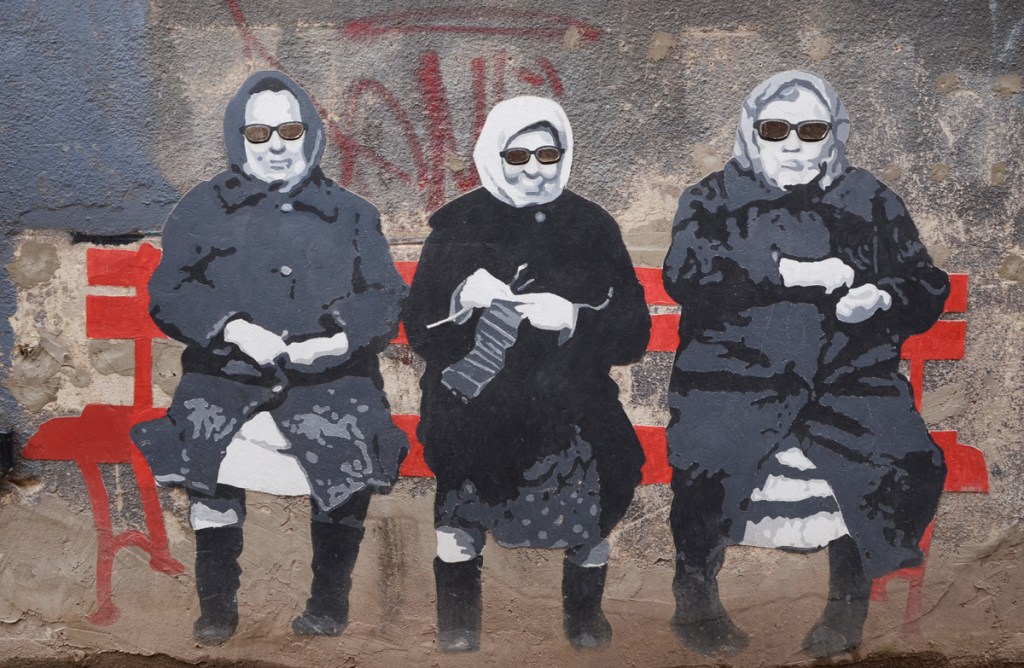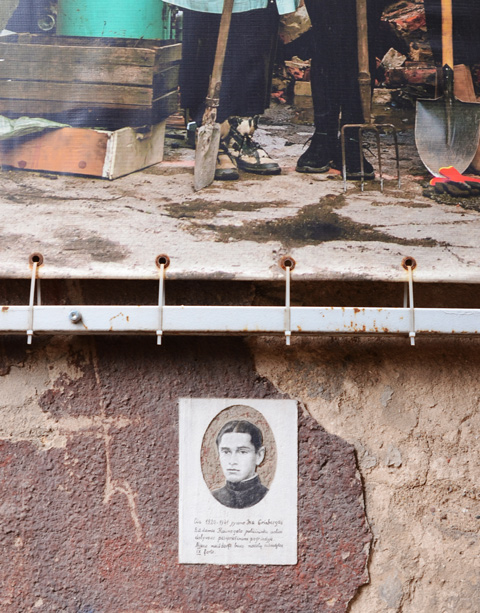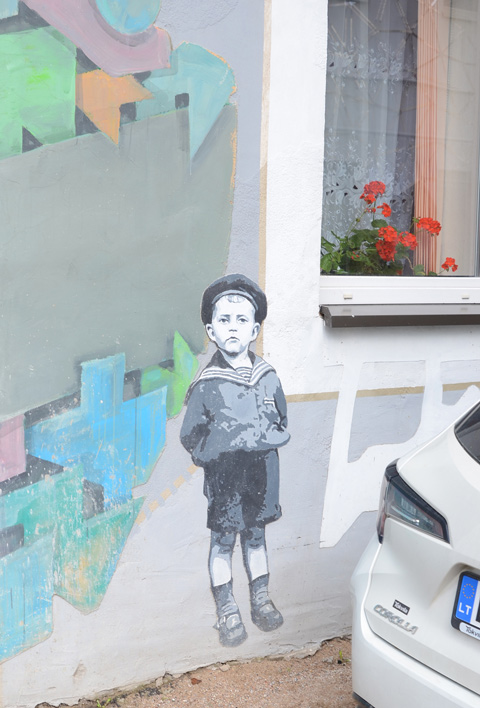Before the second World War, about one quarter of the population of Kaunas LIthuania was Jewish – about 30,000 people. Known in Yiddish as Kovno, it was a city As part of the City Telling Festival (Istoriju Festivalis) in 2020 a couple of large murals were painted in memory of a few of these people. This festival was one of the events leading up to 2022 where Kaunas was one of the “European Capitals of Culture”
below: Leja (or Leah) Goldberg, b. 1911, poet. It was painted by Lithuanian artist Linas Kaziulionis and it measures 15 by 10 meters. The text is one of her poems “Oren” (Pine) written in Hebrew and Lithuanian.

Goldberg was the daughter of Abraham and Cilia Goldberg. Her father was an economist at an insurance company before WW1. During the Great War (i.e. WW1), most of the Jews were “evacuated” from Lithuania and sent to the interior of Russia. Lea was three years old when the family was forcibly deported from Kaunas. When they returned after the war and the defeat of Germany, Lea’s father was tortured by Lithuanian soldiers who accused him of being a Communist. He died before Lea emigrated to Palestine in 1935; her mother followed her the next year.
One translation of the poem:
PINE
Here I will not hear the voice of the cuckoo.
Here the tree will not wear a cape of snow.
But it is here in the shade of these pines
my whole childhood reawakens.
The chime of the needles: Once upon a time –
I called the snow-space homeland,
and the green ice at the river’s edge –
was the poem’s grammar in a foreign place.
Perhaps only migrating birds know –
suspended between earth and sky –
the heartache of two homelands.
With you I was transplanted twice,
with you, pine trees, I grew –
roots in two disparate landscapes.

below: Another mural with a poem that was also part of the same festival. It was painted by Tadas Vincaitis-Plūgas. The is mural dedicated to another Jewish family that lived in Kaunas before WW2.

The words are those of Hirsh Ošerovičius (1908-1994) written in 1964. The text is in Lithuanian but one English translation is:
Ah, do you really believe,
Oblivion has the final say in what is to be forgotten?
For it is often only an image from the ashes rising
And stand in flesh, in full reality
Forever framed for every day to come.

The mural depicts a mother, Greta, and her daughter Rosian Bagriansky. Rosian was born in 1935 in Kaunas. Her father, Paul (or Polis) Bagriansky, was a textile merchant and her mother was a concert pianist and music teacher. Rosian survived the Holocaust after her parents dug a hole next to the fence of Kaunas Ghetto and pushed Rosian through it and into the hands of one of their former employees, Bronė Budreikaitė. Rosian became Irena Budreikaitė











